I’ve been looking at ways to tame the excessive sharpening that Sigma Photo Pro introduces to images from the Merrill cameras, and I’ve discovered a really good workaround. During a discussion of that scheme, a reader suggested that I look at the Merrill colors. A long-time DPR member whose handle is xpatUSA provided me with the sensor spectral response and the hot mirror transmission spectra for the cameras, which are purportedly the same for all the Sigma Foveon cameras prior to the Quattro ones.
I reacquainted myself with a program I wrote several years ago to generate optimal compromise matrices, and fed it the Foveon spectral curves. Here’s what I got back:
A Sensitivity Metamerism Index of 82. That’s not very impressive. High accuracy consumer cameras score in the high 80’s and low nineties. Perfect is 100. Worried that I had gotten hung up on a local minimum, I tried the genetic algorithm with a population of half a million.
Not quite as good, but the GA isn’t great at ferreting out the local minima in detail.
Here’s what the optimization looked like:
I doubt if there’s a deep global minimum that the GA missed.
Compare that SMI to another camera:
Here’s as good as you can get with Gaussian raw channel spectral responses:
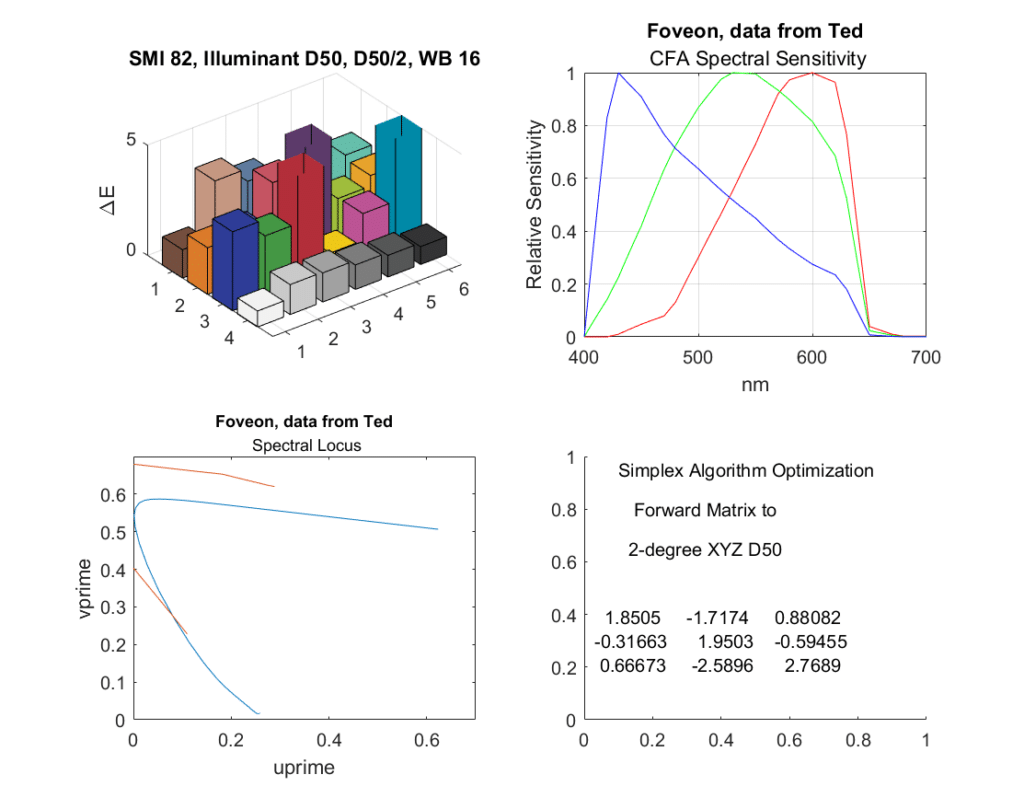
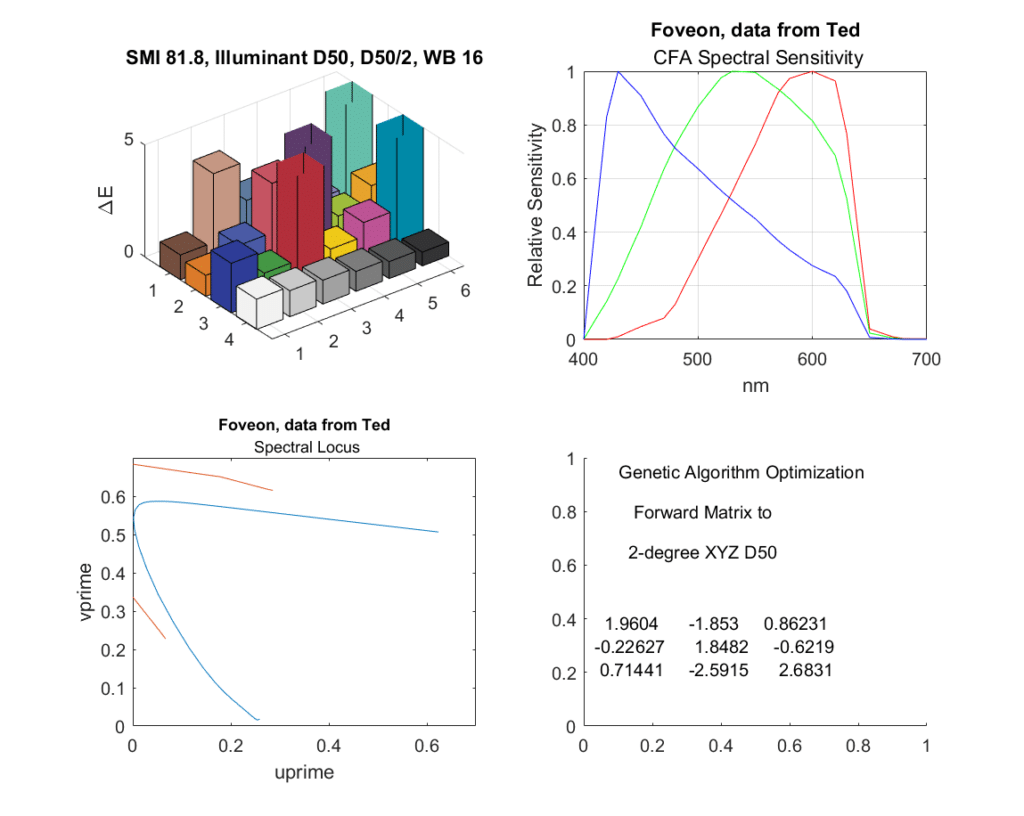
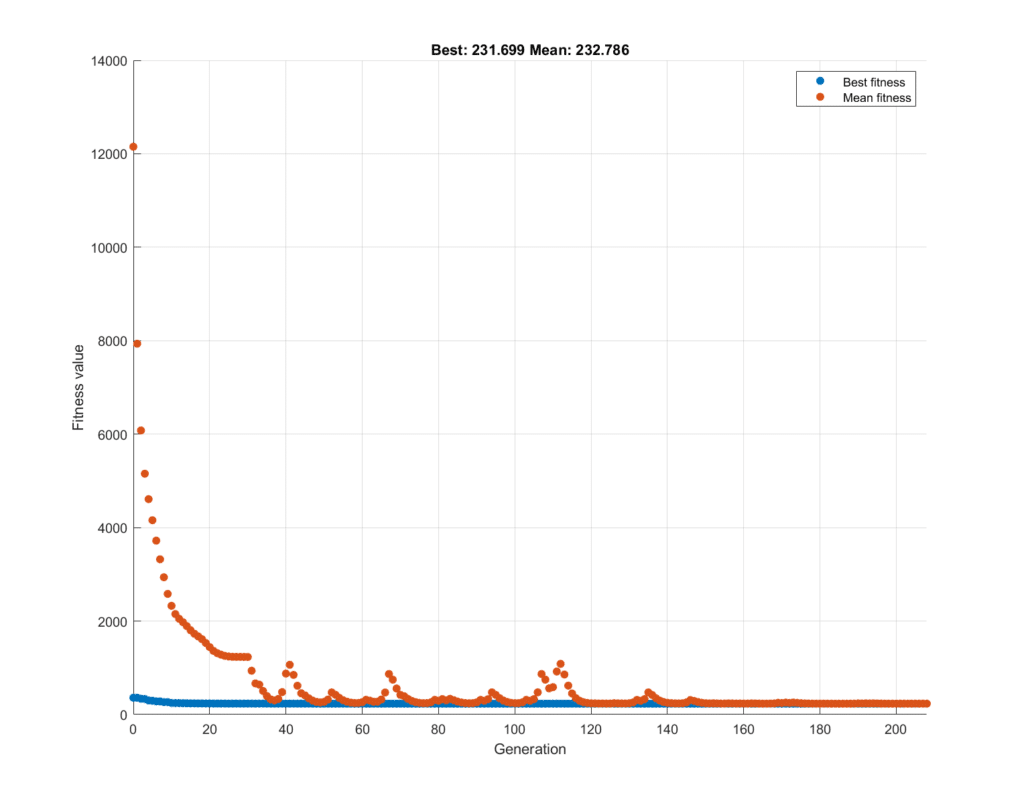
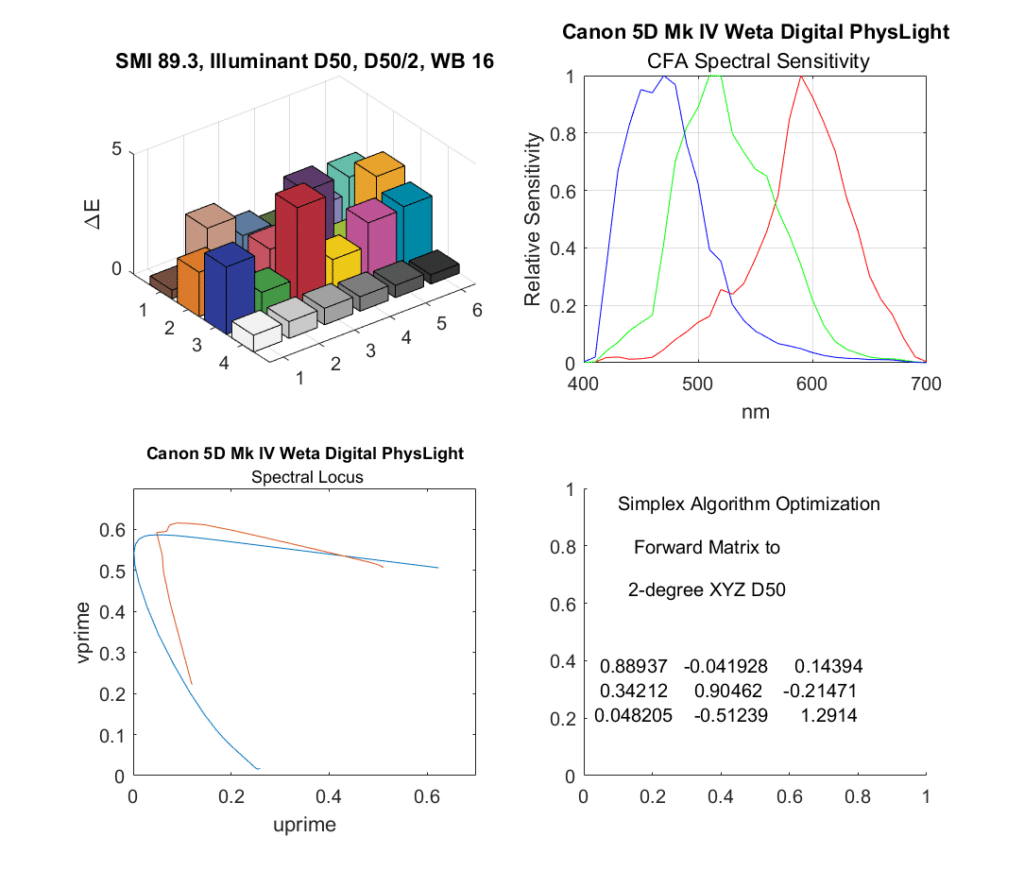
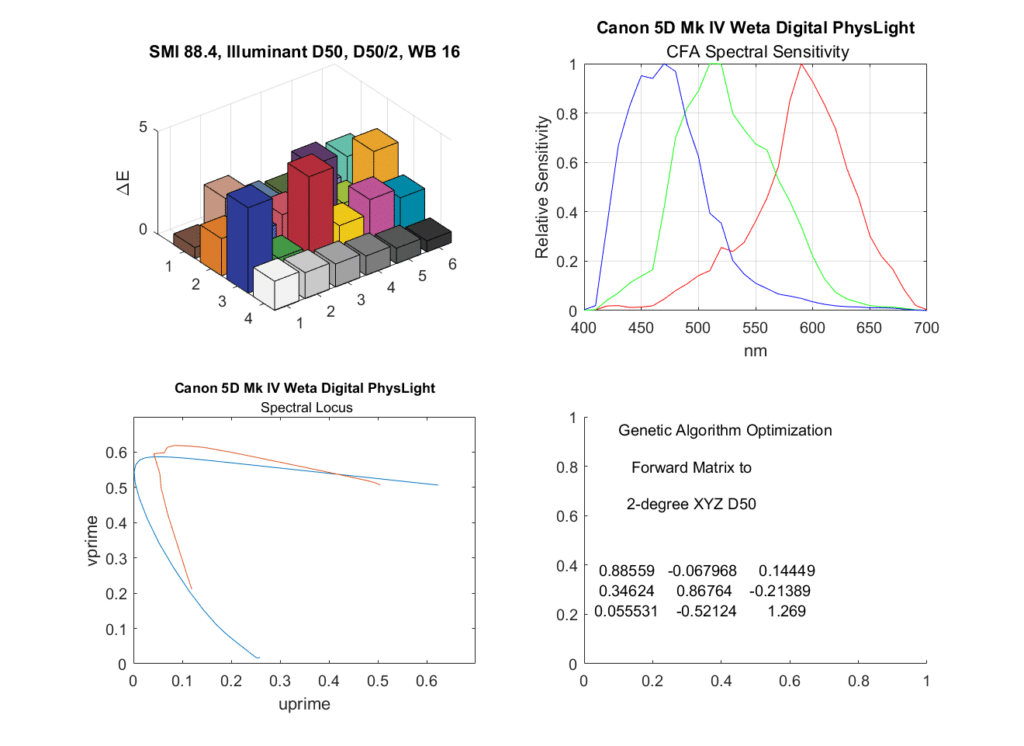
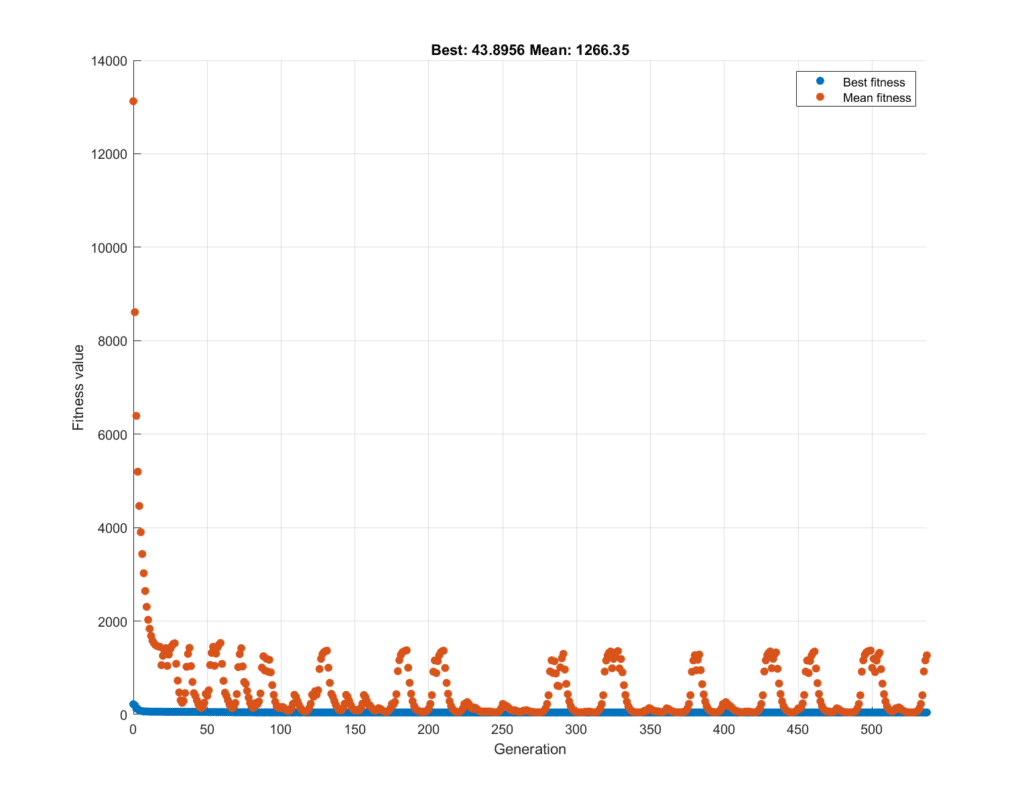
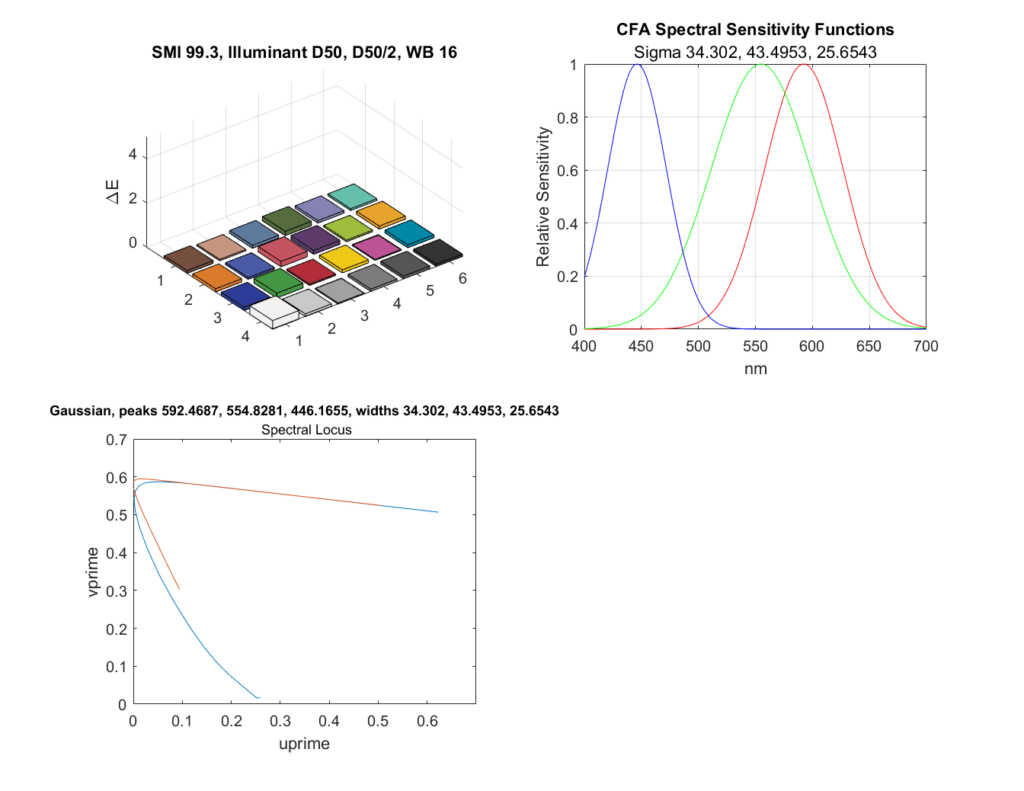
Paul says
I you have a responsibility to publish a caveat regarding your above Foveon input data stating clearly that it’s origin and manner in which it (data) was gathered cannot be verified for quality nor accuracy. Can you imagine during your professional years, a lab redoing your work without proper, verified data and then publishing findings that cast your original work in qluestion and with some dismissiveness?
As you know the cutoff filters for these frequencies are very specific and expensive. Generally, only sensor and camera manufacturers use them. I believe the separation of the RGB channels is even more difficult with the Foveon polychromatic pixel.
That said, I do not believe your experiment with xpat data is valid.
Thank you for listening.
JimK says
If you have better spectral data, I’d love to see it.
JimK says
See this:
https://blog.kasson.com/the-last-word/foveon-merrill-color-accuracy-continued/